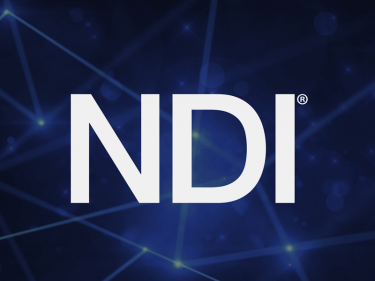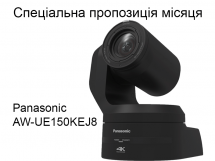| Українська | English | |||||||||||
|
|||||||||||
| News | About company | Service-centre | OB Van/SNG Rental | NextGen Energy Solutions | Contact us |
|
|
Engineering Service, Inc.
» News News The traffic and processing capabilities of Network Device Interface (NDI) video-over IP technology and its surrounding ecosystem of products make it a suitable choice for many complex broadcast IP projects, writes Three Media CTO Craig Bury
My career in broadcast and media began back in 1971, and I’ve seen a lot of major technology changes since then: black and white to colour, mono to stereo, analogue to digital. Now we are in the middle of another massive shift – from SDI to IP – and while it is bringing plenty of benefits in making productions and operations more flexible and conducive to remote working, it is also presenting huge challenges as well. Part of the problem on this occasion is that broadcast workflow needs are changing simultaneously in so many ways. Remote working and remote production were discernible trends before the pandemic – but have surely now accelerated as a result. This calls for more versatile access to content outside of the traditional studio environment, often using mobile connections or the domestic WiFi of reporters or producers. Meanwhile, the number of streaming platforms and services that content producers have to support is growing all the time. It won’t be a surprise to discover that the adoption of the cloud for production and managed services is already playing a big role in providing these more flexible workflows. Cloud services are maturing, and many broadcasters are in the process of implementing (at least) hybrid cloud/on-premises infrastructures. But the shift from SDI to IP networking is arguably proving more problematic as we haven’t yet reached the stage where the interoperability issues have been resolved. For example, there has been a lot of attention given to the SMPTE ST 2110 suite of standards, which have undoubtedly been a big catalyst for the IP movement. But at the moment our experience of it tells us that there are still some tricky areas. In particular, the support that vendors are offering for ST 2110 is variable – some are doing it very well, others less so. That means there is a serious possibility of interoperability issues between systems from different vendors – not something you want to have to contend with! It’s in this context that my team is currently looking towards NDI as a more capable and seamless route into broadcast IP. Developed as an open-source technology by NewTek, which was then acquired by Vizrt, it has more recently spun out into its own operational entity. Developed to allow real-time, ultra-low latency on existing IP networks, NDI offers several major advantages to broadcast users when compared to many other IP technologies. Removing the need for costly networking and infrastructure investments, NDI is able to utilise standard Ethernet-based LAN networks, making it possible to connect every system in the MCR and related environments – including cameras, screens, production rooms, control and operational facilities. It also allows every enabled device and source to be visible on the network as a source or destination – giving MCR personnel a complete overview of the network at all times. Moreover, in contrast to some technologies where the focus is on uni-directional transport, NDI enables multi-directional, two-way signal transmission over IP – to and/or from any NDI-enabled device. This makes the whole process much more efficient and a decisive step up from simply replacing SDI cabling with Ethernet. Other advantages of NDI include a codec that requires less processing power than many competitors, the ability to handle double-digit video streams using a Gigabit network connection, and the fact that it has already been tested extensively in ‘real world’ productions. There are, however, two aspects in particular that we think will mean NDI truly goes the distance in broadcast. Providing a universal workflow, NDI is not beholden to resolution or format – meaning that it can continue to be used successfully as the industry moves from HD to 4K and even 8K. Of course, this also means that it can continue to be refined and augmented without affecting interoperability. Indeed, with the increase in remote working and production on everyone’s mind, the latest version, NDI 5, adds several significant new features, including NDI Bridge (for sharing NDI sources with others beyond your local network) and NDI Remote (sharing or receiving an NDI source over the web). The amount of production being done outside of the studio, and by smaller teams on-site and at home, will continue to increase – meaning that standardised technologies will become ever more critical. NDI provides precisely this kind of reassurance, and it’s a key reason why we are supporting its roll-out in broadcast and in particular, the workflows that extend past production and into presentation, linear transmission and distribution. This is new territory for NDI. As an open-source technology, it is also possible to customise an implementation very specifically – as an example an MCR operations centre which we are currently working on – and means an easier path to adding refinements for requirements like data retention and audio analysis. But all the time there is the assurance that the core interoperability is present and comprehensive and that an NDI installation will always work seamlessly. Further underlining our belief that NDI is the route to take for broadcast IP, the technology is being used increasingly widely in major productions, such as the BBC’s Springwatch and Autumnwatch programmes. The production workflow of these shows has developed in a very forward-looking way, and that’s a testimony to the BBC tech teams involved. Pre-pandemic, NDI was bringing content back from the teams out in the field and enabling the vision desk to be operated remotely. That meant considerable savings in time and money, with the need for full OB facilities greatly reduced. Moreover, with Covid-19 calling for even more remote working, NDI has allowed the team to undertake even more editing and post tasks outside of the studio. Hence, it’s apparent that NDI is a technology that is fully able to evolve as your broadcast needs change. For all the attention given to IP over the last few years, we are still in the early chapters of its broadcast story, but even now the capabilities and seamless user experience of NDI mean it has become our ‘go to’ broadcast IP network technology. « To the list of news |
|
|||||||||||||||||
 |
+38 (044) 593-18-20 +38 (073) 593-18-20 +38 (096) 532-96-82 +38 (095) 532-96-82 Service center Telegram @Engineer_Service |

|
|
|||||
 |
e-mail: engineer-service.tv 15 Vavylovykh str., Kiev, 04060, Ukraine Authorized service centre of Panasonic, Sony, JVC, Fujinon, Canon |
|||||||







